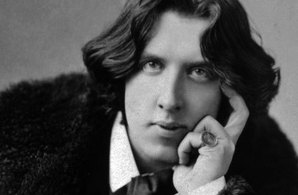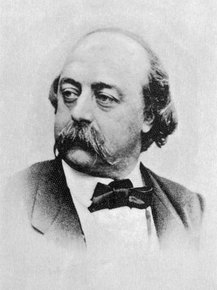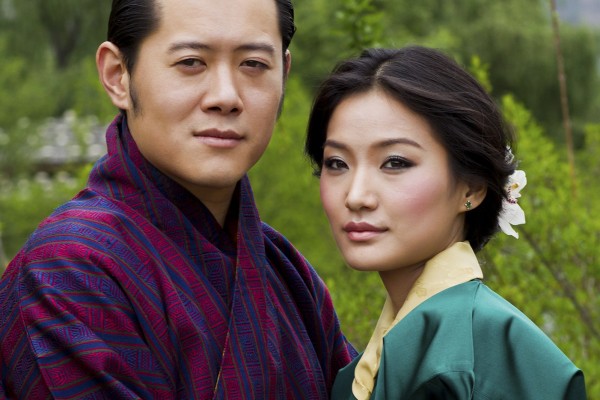|
My apologies to Bruce Willis. No wonder your latest movie is set in Russia. Of course the librarian's favorite action hero would be drawn to the country with the most public libraries.
Yes, you read that correctly. Russia is number one for public libraries in the world, with over 33,000. I was shocked, flabbergasted, my jaw was literally dragging on the floor when I discovered this. On the one hand, it makes sense, given the country's Communist history. The philosophy that decrees the abolition of private ownership in this case would read: no one owns the books, everyone owns the books. Apparently, the United Kingdom is second on the list with well over 23,000 public libraries and Germany takes a close third with over 20,000. I know what you're asking in a jingoistic fever: okay, where's the good old US of A, that bastion of democracy and education for all? Well, we are fourth, but a very distant fourth, considering the size and population of our nation. According to the latest statistics from the American Library Association, there are just under 9,000 public libraries in the U.S. We are not very far ahead of the Czech Republic and Romania. National tradition apparently plays a large role in determining the ratio of libraries to population. In Japan, borrowing a book is not a commonplace thing to do and hence, the country has just a smidge over 1,000 public libraries. However, in Finland, book swapping must help pass the long winter nights that last into day (and the long summer days that extend into night) because, although Finland has a population just a bit over 4% of Japan's, it has over 900 libraries.
0 Comments
In one of those moments where I went searching for information about one topic and stumbled across information on something entirely different, I recently learned that the Kingdom of Bhutan measures not only its Gross Domestic Product (GDP), but its Gross National Happiness (GNH) as well.  Bhutan ("Land of the Thunder Dragon") is a landlocked state in South Asia, nestled on the southern slopes of the Himalayas, sandwiched between India and China. It's a land of steep, jagged mountains and deep valleys through which course swift-flowing rivers. Its diverse flora and fauna include the increasingly rare Bengal tiger and snow leopard, the red panda, and primates such as the golden langur. (Sounds delightfully like some parts of Middle Earth.)  Golden Langur In 1999, just before the new Millennium, Bhutan lifted its ban on television and the Internet. And throughout the first decade of the 21st Century, it underwent considerable political reform, becoming a constitutional monarchy, with a cabinet of ministers and an elected National Assembly that has the power to impeach the monarch! Through the Centre for Bhutan Studies, it also made a serious attempt to measure the happiness of its people through an indicator called Gross National Happiness that measures quality of life and social progress in more holistic and psychological terms than simple economic factors, which in Bhutan's case is "how much electricity can we sell to India?" (All those rushing rivers create a lot of hydroelectric power!)  Bhutan temple = Shangri-La? Learning all this, of course, got me to thinking about happiness in general. Bhutan measures it in nine different domains, including time use, cultural and ecological diversity, resilience, education, health and something called "good governance." Hmmmm, we might have to leave that last one off of any happiness survey taken in Illinois (and on a national level). When seeking to form an opinion on weighty matters, I often like to consult the words of my predecessors in hopes of gaining a larger perspective. So once again, I turned to Bartlett's and the online quote farms for a gander at the wisdom of the ancients.  Image of Buddha (Tibetan) Since the majority of the Bhutanese practice Buddhism, it seemed appropriate to consult Buddha first. And, as usual, with him, as with Janet Jackson, it's all about control: "To enjoy good health, to bring true happiness to one's family, to bring peace to all, one must first discipline and control one's own mind. If a man can control his mind he can find the way to Enlightenment, and all wisdom and virtue will naturally come to him." The Dalai Lama weighed in on this as well: "Happiness is not something ready made. It comes from your own actions." I sense a lack of emphasis on the material here.  He looks reasonably happy. "Money has never made man happy, nor will it, there is nothing in its nature to produce happiness. The more of it one has the more one wants." That's Benjamin Franklin talking. Of course, he also said this: "Marriage is the most natural state of man, and... the state in which you will find solid happiness." And there are scads of unhappily married people in the world who would vociferously disagree. (I would hope that does not include the King and Queen of Bhutan, who look like a darling couple who would be a sparkling addition to any dinner party.)  "Make my day. Go away!" Speaking of dinner parties, that means other people, and there are plenty of opinions out there about how other people can or cannot affect one's happiness quotient. As Oscar Wilde, he of the razor-sharp wit, noted: "Some cause happiness wherever they go; others whenever they go." I would be remiss if I did not consult the Bard of Avon, who moaned: "But O, how bitter a thing it is to look into happiness through another man's eyes." (from Act 5, Scene 2, As You Like It.) Mr. Acerbic Straightshooter (literally and figuratively) Ernest Hemingway complained that "the only thing that could spoil a day was people. People were always the limiters of happiness except for the very few that were as good as spring itself."  I'm happy just looking at her! Wow, you're mumbling to yourself, this is getting rather depressing! I thought the topic was "happiness!" Okay, okay, enough angst about happiness! After all, according to comedian George Burns, "happiness is having a large, loving, caring, close-knit family in another city." And doctor, do-gooder and Nobel Prize-winner Albert Schweitzer (and Audrey Hepburn paraphrasing him) joked that "happiness is nothing more than good health and a bad memory."  Gustave "I am the Walrus" Flaubert Hmmm, I sense a trend here about happiness and the brain. Hemingway (yes, him again) wrote: "Happiness in intelligent people is the rarest thing I know." But let's allow Gustave Flaubert to have the last word on happiness for today: "To be stupid, selfish, and have good health are three requirements for happiness, though if stupidity is lacking, all is lost." Okay, Mr. Flaubert, if that's the case, then what was Madame Bovary's problem?  If a Martian landed on Earth and watched the Summer Olympics on prime-time television, it would probably conclude that the games consist of a handful of sports: swimming, gymnastics, diving, soccer, basketball and track-and-field events. In reality, the London 2012 Olympics will feature 26 sports in 302 medal events. Since the inaugural of the Modern Olympics in 1896, sports have been dropped and added as popularity and/or feasibility waxes and wanes. Here's a look at a few of those obscure or obsolete sports, which may leave you scratching your head and muttering, "What were they thinking?"  (Courtesy: Olympic.org) The Rope Climb Shades of a 1960's era gym class! Shinnying up a rope was once an Olympic event! Rope Climbing was included in the gymnastics program from 1896 through 1932. Competitors were required to ascend a suspended vertical rope, using only their hands. They started from a seated position on the floor and were timed. (Apparently in the 1896 event, style points were also awarded.) In 1896, the rope was 14 meters long (almost 46 feet!!!). Only two men, both Greek athletes, made it to the top. For future events, they lopped off about half the rope! And as all who suffer from a distinct lack of upper body strength sigh in relief, the powers-that-be (the IOC) dropped the rope after 1932. Unfortunately, sadistic gym teachers around the world kept the activity to torture their students throughout elementary and high school.  (Courtesy: Olympic.org) Swimming Obstacle Race This one-time-only event was held in 1900 at the Paris Summer Games, but I am guessing that it might be ripe for a revival and a return to the Olympic roster, given the popularity of such TV shows as "American Ninja Warrior" and "The Amazing Race," which feature all sorts of crazy obstacle course challenges. Could become a new fan favorite! As a combination swimming event/obstacle course, the competitors had to climb over a pole, then clamber over a row of boats, and then swim under another row of boats (total distance 200 meters). Since this event was held outdoors in the River Seine, the competitors also had to contend with the current. Might be a way for Michael Phelps to continue competing into his thirties...  Pierre de Coubertin, sports fan and poet Art I kid you not. From 1912 to 1948, the Olympics included competitions in the artistic categories of architecture, literature, music, painting, and sculpture. In fact, the "father of the Modern Olympic movement," Pierre de Coubertin, founder of the International Olympic Committee, won a gold medal in literature for his poem "Ode Au Sport" in 1912. I know what you're thinking: they gave it to him because he was the boss. Actually, he submitted the entry under a pseudonym. Of course, when he won, he had to present the gold medal to himself. Scandalous!  W.E. Dickey, gold medalist, 1904 plunge Plunge for Distance When we were kids, we used to call this "Dead Man's Float." You know, you dive in the pool and then see how far you can travel underwater without using your hands or feet to help propel your body. The one who gets the farthest before his head surfaces wins. This event was only held once at the Olympics, in Paris 1904. I wonder why... (Photo courtesy of Missouri History Museum)  (Courtesy: Olympic.org) Tug-of-War (Not to be confused with T.E.G.W.A.R., the notorious card game from Mark Harris' novel Bang The Drum Slowly) Yes, another children's game was a sanctioned Olympic Summer Games event from 1900 through 1920. Tug-of-war was part of the track & field events. Perhaps it was included as an homage to the Ancient Olympics of Greece, where it was a highly anticipated contest. In the modern Olympics, the tug-of-war event pitted two teams of eight contestants. In order to be victorious, one team had to pull the other six feet in order to win. If after 5 minutes no team had achieved this, the team which had pulled the greatest distance was declared the winner. I discovered Wonderopolis, a fabulous website to use with children to enhance their natural curiosity about the world. You know how children are always asking questions? Well, adults should keep that mindset as well! Imagine the progress we'd make! They feature a wonder-of-the-day, which widget I have added to the home page of this website.
As the site notes: "Visit Wonderopolis®. It’s a place where wonder and learning are nurtured through the power of discovery, creativity and imagination." Wonderopolis is brought to life by the National Center for Family Literacy (NCFL) and supported by the Verizon Thinkfinity, the Annenberg Foundation, Better World Books and Humana. Sublime, sublime, sublime! I love learning something new every day, especially when it's cool, really useful and related to technology. Here's a short instructional video about some of the cool ways to use Google Image Search (beyond just searching for an image)!  On this day in 1965, astronaut Edward White became the first American to “walk” in space, during the flight of Gemini 4. White was selected as a member of the astronaut team by NASA in September 1962. He was pilot for Gemini 4, which was a 66-revolution, 4-day mission that launched on June 3, and ended on June 7, 1965. He was outside Gemini 4 for 21 minutes. Other highlights of the mission included cabin depressurization, the opening of cabin doors, and 12 scientific and medical experiments. He was awarded the NASA Exceptional Service Medal and U.S. Air Force Senior Astronaut Wings. On March 21, 1966, he was named one of the pilots of the AS-204 mission, the first 3-man Apollo flight. Tragically, he died on January 27, 1967, in the Apollo spacecraft flash fire during a launch pad test at Kennedy Space Center, Florida. |
AuthorTo find out more about me, click on the Not Your Average Jo tab. Archives
February 2024
Categories
All
|




 RSS Feed
RSS Feed